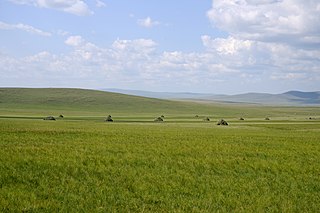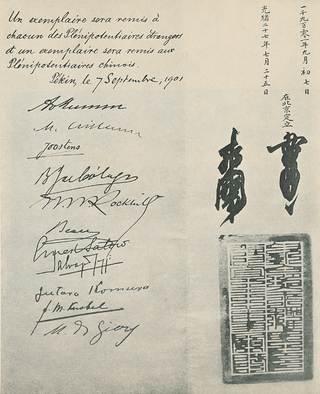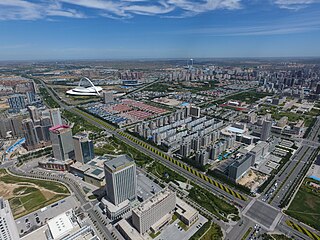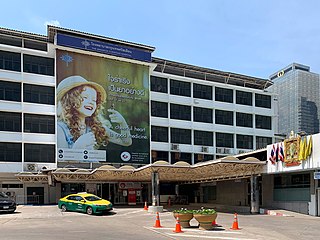Related Research Articles

Inner Mongolia, officially the Inner Mongolia Autonomous Region, is an autonomous region of the People's Republic of China. Its border includes two-thirds of the length of China's border with the country of Mongolia. Inner Mongolia also accounts for a small section of China's border with Russia. Its capital is Hohhot; other major cities include Baotou, Chifeng, Tongliao, and Ordos.

The Boxer Protocol was signed on September 7, 1901, between the Qing Empire of China and the Eight-Nation Alliance that had provided military forces as well as Belgium, Spain, and the Netherlands, after China's defeat in the intervention to put down the Boxer Rebellion. It is regarded as one of the unequal treaties.

Christianity in China has been present since the early medieval period and it has gained a significant amount of influence during the last 200 years.

The CICM Missionaries, officially known as the Congregation of the Immaculate Heart of Mary and often abbreviated as C.I.C.M, is a Catholic clerical religious congregation of Pontifical Right for men established in 1862 by the Belgian Catholic priest Theophile Verbist (1823–1868). Its members add the post-nominal letters C.I.C.M. to their names to indicate membership in the congregation.

Ordos, also known as Ih Ju, is one of the twelve major subdivisions of Inner Mongolia, China. It lies within the Ordos Plateau of the Yellow River. Although mainly rural, Ordos is administered as a prefecture-level city. Its population was 2,153,638 as of the 2020 census, and its built-up area made up of Ejin Horo Banner and Kangbashi District was home to 366,779 inhabitants, as Dongsheng District is not a conurbation yet.

Lisu Church is a Christian church of an ethnic minority of southern China, Myanmar, Thailand and a part of India. The Chinese government's State Administration for Religious Affairs has proposed considering Christianity the official religion of the Lisu.

The Catholic Church in Mongolia is part of the worldwide Catholic Church, under the spiritual leadership of the Pope in Rome.

Christianity in Mongolia is a minority religion. In 2020, Christians made up 1.94% of the population.

Protestants in Thailand constitute about 0.77% of the population of Thailand. Protestant work among the Thai people was begun by Ann Judson in Burma, who evangelized Thai war captives who were relocated to Burma. Protestantism was introduced to the country of Thailand in 1828 through the work of Karl Gutzlaff and Jacob Tomlin, the first two resident Protestant missionaries in Thailand.

Christianity was first introduced to Thailand by European missionaries. In 2021, it represented 1.2% of the national population, which is predominantly Buddhist. Christians are numerically and organizationally concentrated more heavily in the north, where they make up an estimated 16% of some lowland districts and up to very high percents in tribal districts.

In modern times the Mongols are primarily Tibetan Buddhists, but in previous eras, especially during the time of the Mongol empire, they were primarily shamanist, and had a substantial minority of Christians, many of whom were in positions of considerable power. Overall, Mongols were highly tolerant of most religions, and typically sponsored several at the same time. Many Mongols had been proselytized by the Church of the East since about the seventh century, and some tribes' primary religion was Christian. In the time of Genghis Khan, his sons took Christian wives of the Keraites, and under the rule of Genghis Khan's grandson, Möngke Khan, the primary religious influence was Christian.

Antoine Mostaert was a Belgian Roman Catholic missionary in China.

Dong Fuxiang (1839–1908), courtesy name Xingwu (星五), was a Chinese general who lived in the late Qing dynasty. He was born in the Western Chinese province of Gansu. He commanded an army of Hui soldiers, which included the later Ma clique generals Ma Anliang and Ma Fuxiang. According to the Western calendar, his birth date is in 1839.
Christianity is a minority in Heilongjiang, a province of China. There are millions of Christians, however. It is an area of rapid growth of Christianity. The Shouters are present in the province. Heilongjiang has persecution of Christians. Harbin has Heilongjiang Provincial Protestant Bible School. Churches of Christianity in Harbin include Harbin Nangang Christian Church, Church of the Intercession in Harbin, Sacred Heart Cathedral of Harbin. Heilongjiang used to have more than 100,000 orthodox. Saint Sophia Cathedral in Harbin is a former Russian Orthodox Church. The current church, Pokrov Church has been reopened in 1984 and has services in Chinese. Huangshan has an orthodox churchyard.
The earliest preserved translation of the Bible into the Mongolian language dates to 1827, but there is a written record of what may perhaps have been a translation existing as early as 1305. Since 1827, numerous other translations have been made.

Christianity is a minority religion in the Chinese province of Sichuan. The Eastern Lipo, Kadu people and A-Hmao are ethnic groups present in the province.

Theophile Verbist, CICM was a Belgian Catholic priest who founded the Congregation of the Immaculate Heart of Mary, a missionary religious congregation of men. He led missionary activities in China.
The Wujia River is a river in the Inner Mongolia of the People's Republic of China, located in the northern part of the river-loop plain in western Inner Mongolia. The ancient Yellow River in the Hetao region is the current Wujia River. According to Commentary on the Water Classic records, the Wujia River that flows north from Bayangol Town (巴彦高勒镇) was originally the main stem of the Yellow River. "Wujia River" means "One End of the River" (河的一端) or "Tip River" (尖河) in Mongolian.
Alphonse Frédéric De Moerloose, born in Gentbrugge, Belgium, on 12 January 1858, died in Schilde, Belgium, on 27 March 1932 was a priest of the Congregation of the Immaculate Heart of Mary [CICM] and a Belgian architect. He was a missionary in China from 1885 to 1929 and built several Catholic churches in Inner Mongolia and North China.
References
- ↑ "Orthodox Churches of Inner Mongolia Autonomous Region". Orthodox.cn. Retrieved 2 August 2017.
- ↑ "Archived copy" (PDF). Archived from the original (PDF) on 2013-10-12. Retrieved 2015-03-07.
{{cite web}}: CS1 maint: archived copy as title (link) - 1 2 3 4 5 "Mongolian | OMF". www.omf.org. Archived from the original on 24 July 2009. Retrieved 17 January 2022.
- ↑ "China "Detains" House Church Alliance President In Inner Mongolia". Worthynews.com. 25 February 2008. Retrieved 2 August 2017.
- 1 2 "China: Christians neglected in Inner Mongolia". Religioscope. 30 August 2002. Retrieved 2 August 2017.
- ↑ "House Church in Inner Mongolia Raided, Woman Missionary Sentenced to Re-education through Labor | dossiertibet". Archived from the original on 2012-07-29. Retrieved 2011-07-20.
- ↑ "Bible Ministry Exhibition of the Protestant Church in China Website". Archived from the original on 2012-03-28. Retrieved 2011-07-21.
- ↑ "Christians Neglected in Inner Mongolia". Archived from the original on 2012-07-30. Retrieved 2011-07-21.
- ↑ "The Bible in Inner Mongolia - UBS China Partnership - Bibles in China". Ubscp.org. 22 November 2007. Archived from the original on 29 June 2017. Retrieved 2 August 2017.
- ↑ "Archived copy" (PDF). Archived from the original (PDF) on 2011-09-27. Retrieved 2011-07-21.
{{cite web}}: CS1 maint: archived copy as title (link) - 1 2 3 4 "Archived copy". Archived from the original on 2011-05-18. Retrieved 2011-07-21.
{{cite web}}: CS1 maint: archived copy as title (link) - ↑ Bickers, Robert A.; Tiedemann, R. G., eds. (2007). The Boxers, China, and the World (illustrated ed.). Rowman & Littlefield. p. 30. ISBN 978-0742553958 . Retrieved 2010-06-28.
- ↑ Ann Heylen (2004). Chronique du Toumet-Ortos: Looking through the Lens of Joseph Van Oost, Missionary in Inner Mongolia (1915–1921). Leuven, Belgium: Leuven University Press. p. 203. ISBN 90-5867-418-5.
- ↑ Patrick Taveirne (2004). Han-Mongol Encounters and Missionary Endeavors: A History of Scheut in Ordos (Hetao) 1874–1911. Leuven, Belgium: Leuven University Press. p. 539. ISBN 90-5867-365-0.
- ↑ "CINA Mongolia Interna, demolita l'unica chiesa cattolica di Ordos per costruire una nuova strada". Asianews.it. Retrieved 2 August 2017.
- 1 2 "Catholiques chinois sous haute surveillance". Lavie.fr. 29 July 2010. Retrieved 2 August 2017.
- ↑ "Vier priesters van de verboden kerk in China opgepakt". Het Belang van Limburg. Retrieved 2 August 2017.
- ↑ "Scheut Missions-CICM Missionaries in China". Archived from the original on 2011-09-27. Retrieved 2011-07-20.